| Zeitschrift Umělec 2006/1 >> Artists in Wonderland | Übersicht aller Ausgaben | ||||||||||||
|
|||||||||||||
Artists in WonderlandZeitschrift Umělec 2006/101.01.2006 Tony Ozuna | kommentar | en cs |
|||||||||||||
|
A few years ago (Issue 3/2003), Umelec dedicated an issue to the theme, “The End of the Fairy Tale,” and in his essay “End of the Fairy Tale (between the fairy tale and Václav Stratil),” Jiří Ptáček took the English children’s story-teller Lewis Carroll to task for needing a magical mirror, the looking glass, to permit little Alice to enter a fairy tale land beyond her mundane reality.
Ptáček acknowledges that Carroll shouldn’t be solely criticized for this, since perhaps it is the readers themselves (our society in general) who need a trick of smoke and mirrors to permit entrance into wild adventure lands, escapes into alternative realities. If we confine ourselves to reality (not virtual reality) on this point, more than any other member of society, it seems, artists are able to create or actualize their fantasies. From internationally famous art frauds like Koons to the unknown artist living next door. In his recently published catalog, the young Czech artist Kristof Kintera admits as much, in response to the question, “Why do you do art?” “It is a way to escape the normal, the everyday routine where everything is as it is supposed to be, everything has its timetable, invoices, and rules. In art as I understand it everything is possible. Absolutely everything.” Of course, the best of fairy tales, such as Carroll’s “Alice in Wonderland” and “Through the Looking Glass” do exactly what Kintera embraces as an artist. “It’s a free-style with no rules or off-sides,” says Kintera. And it is precisely this escape from the drudgery of normality that is such a rush of pure ecstasy for children, even if it’s just in a book. But the same can be said for adults as well. I often wonder why fairy tales were so abundant under communism, and even so today. This is because they are not just for kids. Everyday there are fairy tales on Czech television. On weekends there are generally more than on weekdays: The Ugly Princess, The Smart Princess, The Princess with the Gold Star on her Forehead, There’s No Mushroom Like a Mushroom, etc. Fairy Tales are essential children’s programming, and they are so ingrained in Czech culture, that it is unimaginable to consider Czech TV without them. So, like it or not, there is no end in sight for the fairy tale. Instead, it remains a potent source of the social imagination, thus Czechs are psychically at ease with the unseen, spirit world. But is this what Ptáček is attacking by symbolically taking the fairy tale character, and stabbing it through the heart? (see the cover of Umelec issue 3/2003 for this gory image.) On the other hand, there are Czech artists who would disagree with Ptáček. About Anemone (Documents from a fairy tale), is a modern fairy tale by visual artist Jiří Černický. Published separately in English and Czech (2005), this children’s art book is part of a series by Meander Publishers, which has included Petr Nikl’s A Fairy Tale About a Wee Fish Named Rybitinka, and Rybaba and The Sea Soul, as author and illustrator, Pavla Hájková’s Rusalka (illustrated by Michaela Černická) and Václav Havel’s The Pizh’duks (illustrated by Jiří Sopko). A good number of heroes in Czech arts and literature have created books for children, both fairy tales and fantasies. Among the most known, the Capek brothers. But the Meander series emphasizes the art more than traditional Czech publishers have done. Nikl’s books especially are pure eye candy: the seemingly glowing, deep green and black illustrations in Rybaba (published in 2002) are evocative of the dark, evergreen ponds in the Czech countryside, though the story is actually about a fish which lives at the bottom of the deepest sea, yet yearns to see the sunlight. Nikl’s first book, Rybitinka (published in 2001), is a funnier text for children and adults (reading it), since it includes sing-a-long songs about various fish, and the story is more original. However, in both books, the stories themselves are nothing special. They are too long and descriptive and often too redundant for younger children, and they are not surprising or unusual enough for older kids. It is the artwork accompanying the text that makes these books worth having in your library. In contrast to Nikl, Černický’s book is not really for young children, and the images in the book seem more devised for a gallery show than a publication. Černický’s work in general seems to be from some unknown planet, so the scenes he depicts in the book are given a firmer context, maybe something he has felt his sculptures can even lack in a gallery space. An image of newlyweds with futuristic white helmets flying across the sky on a magic carpet now has a purpose, because it is part of a story. Černický’s book is a love story, like many fairy tales. And while parts are corny, it is commendable for simply attempting to transmit the “magical” experience of beginning a relationship. The problem with mixing love up with fairy tales is that when love (in reality) goes sour, and the Prince, Princess, or Sorceress (in Černický’s case), turns out to be merely human, some can’t get over this disillusionment. “For my mother, the time of my childhood was the place where the fairy tales failed,” writes Carolyn Kay Steedman. Petr Nikl also takes the fairy tale to another medium. Inspired by a Hans Christian Andersen tale called The Shadow, Glimmer of a Shadow, was his second improvisational performance based on Andersen, at Archa Theatre, this year. As in all of his performances, the visual is a phantasmagorical world where the story becomes irrelevant. Smoke and mirrors are more important than anything else for Nikl’s show. So back to smoke and mirrors. At the entrance to an exhibit called “Ecstasy—in and about Altered States,” at the Los Angeles Museum of Contemporary Art (fall 2005 through winter 2006), Klaus Weber from Berlin has set up a water fountain made of Victorian-cut glass. The three-tiered fountain has water bubbling down into a concrete pool surrounded by glass walls. But there is nothing remarkable about this; actually it is kitsch. A sign hanging nearby the fountain states that the water is laced with LSD. Weber has plans to install a pavilion in Dresden, as a permanent home for his water fountain. It will be a crystal palace permanently flowing with magical water, and with just one dip of a finger, reality around the art installation can theoretically be transformed into a fantastical spectrum. But remember you should never touch the art in a museum. Is this ploy any different than the smoke and mirrors trick that Ptáček criticizes Lewis Carroll for? Don’t forget Carroll’s large magic mushroom, and the stoned blue caterpillar sitting on top of it, smoking a long hookah, at the beginning of Alice. No there is really no difference at all.
01.01.2006
Empfohlene Artikel
|
|||||||||||||
|
04.02.2020 10:17
Letošní 50. ročník Art Basel přilákal celkem 93 000 návštěvníků a sběratelů z 80 zemí světa. 290 prémiových galerií představilo umělecká díla od počátku 20. století až po současnost. Hlavní sektor přehlídky, tradičně v prvním patře výstavního prostoru, představil 232 předních galerií z celého světa nabízející umění nejvyšší kvality. Veletrh ukázal vzestupný trend prodeje prostřednictvím galerií jak soukromým sbírkám, tak i institucím. Kromě hlavního veletrhu stály za návštěvu i ty přidružené: Volta, Liste a Photo Basel, k tomu doprovodné programy a výstavy v místních institucích, které kvalitou daleko přesahují hranice města tj. Kunsthalle Basel, Kunstmuseum, Tinguely muzeum nebo Fondation Beyeler.
|














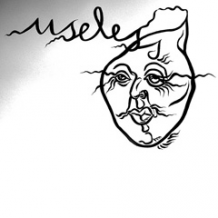






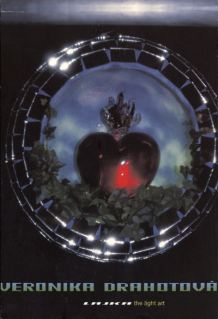




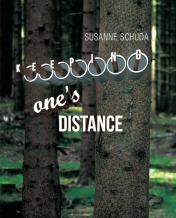
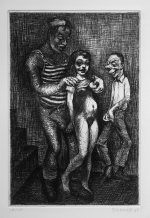
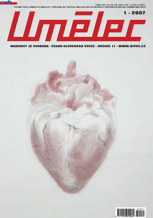
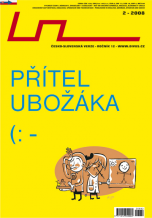


 Potsdamer Str. 161 | Neu Divus in Zwitschermaschine, galerie und buchhandlug in Berlin! | Mit U2 nach Bülowstraße
Potsdamer Str. 161 | Neu Divus in Zwitschermaschine, galerie und buchhandlug in Berlin! | Mit U2 nach Bülowstraße
Kommentar
Der Artikel ist bisher nicht kommentiert wordenNeuen Kommentar einfügen